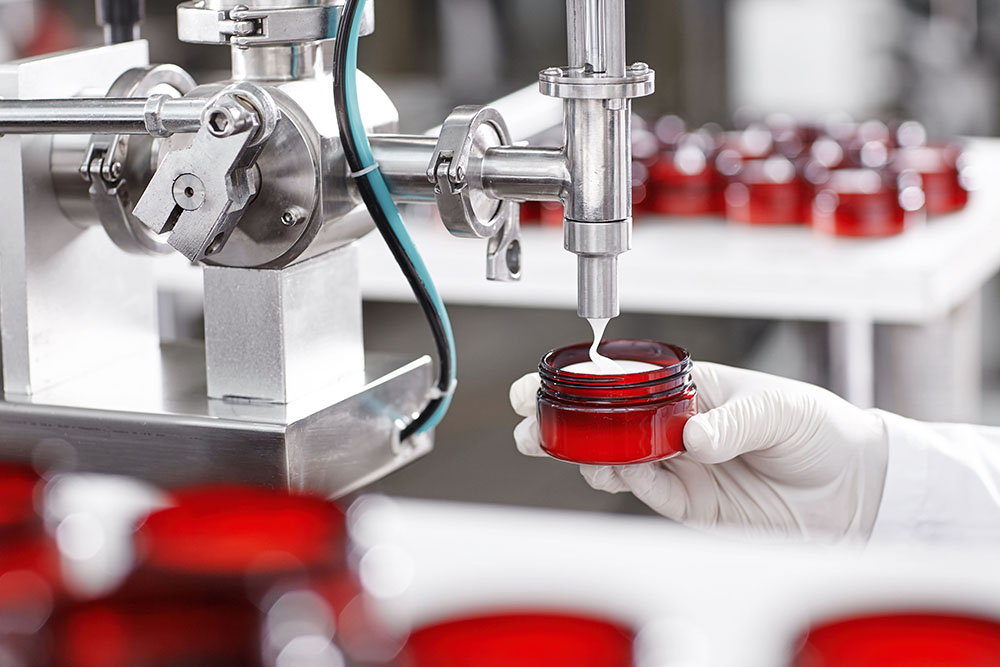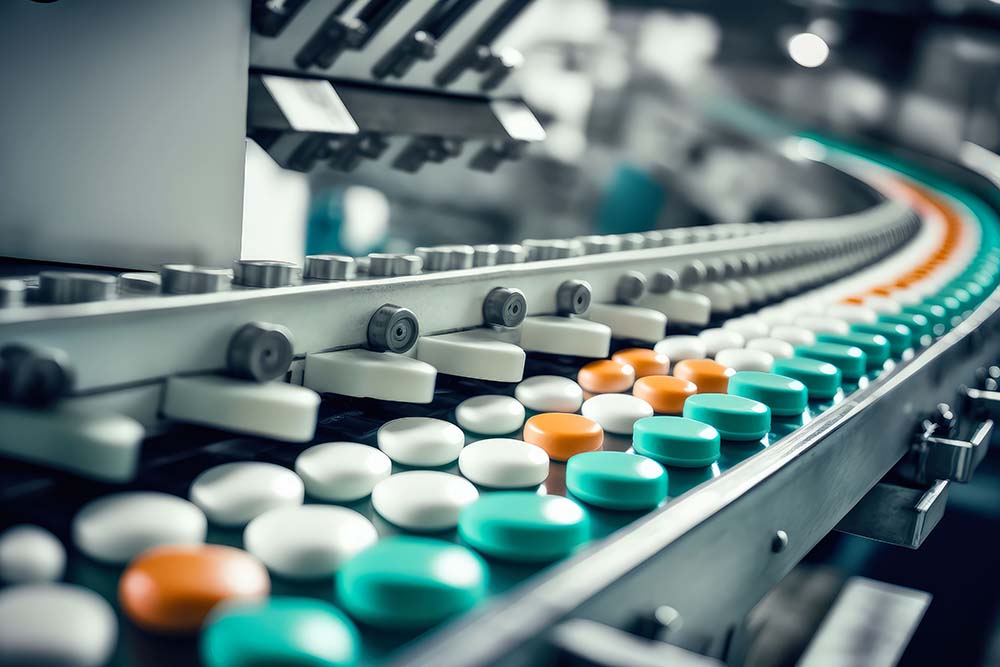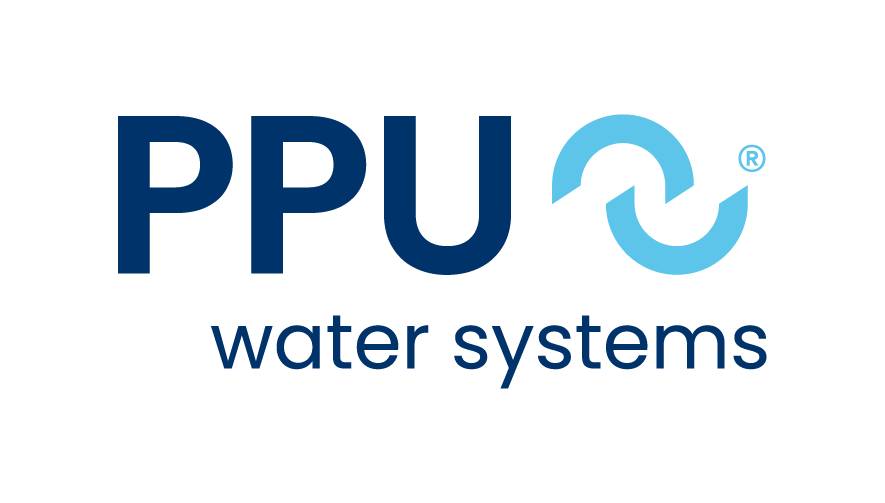Pharmaceutical Wastewater Treatment
Sector Overview
Home > Pharmaceutical Wastewater Treatment
Contents
This page provides an in-depth overview of the sources, wastewater streams, composition, and types of wastewater generated from pharmaceutical and cosmetic companies. With the right plant design and process technology, it’s entirely possible to treat pharmaceutical processing wastewater to meet environmental compliance—or even enable safe reuse.

Sources of Pharmaceutical Wastewater
Wastewater in the pharmaceutical and cosmetic industries originates from a variety of processes, such as:
Manufacturing Processes: These involve the synthesis, formulation, and packaging of pharmaceuticals and cosmetic products, including the production of Active Pharmaceutical Ingredients (APIs) and other chemical compounds.
Equipment Cleaning: Wastewater is generated when production equipment, containers, and floors are cleaned, often containing traces of APIs and other contaminants.
Research and Development: Laboratories produce wastewater from testing, experimentation, and analysis of various products, often containing a wide range of chemicals and microorganisms.
Quality Control: Waste generated during testing and analysis to ensure product safety and efficacy may contain APIs, excipients, and other compounds.
All sources give different components into the wastewater, why pharmaceutical wastewater treatment is a crucial step of the production.
Types of Pharmaceutical Wastewater
Pharmaceutical and cosmetic industry wastewater can be grouped into the following categories:
Process Wastewater: This includes wastewater generated during production processes, such as chemical reactions, formulation, and product packaging, containing APIs and other chemical compounds. This type is a core component of pharmaceutical wastewater treatment.
Utility Wastewater: Wastewater resulting from equipment cleaning, cooling systems, and boiler blowdowns, often containing surfactants and other cleaning agents.
Sanitary Wastewater: Wastewater generated from restrooms, kitchens, and other facility amenities, typically containing organic and inorganic compounds.
Stormwater Runoff: Rainwater that encounters production areas, storage facilities, and equipment, potentially containing contaminants from these surfaces.
Characteristics of Pharmaceutical Wastewater
| Source | Main Pollutants | Typical Concentration Ranges (mg/L) |
|---|---|---|
| Manufacturing Processes | BOD, COD, APIs, heavy metals, suspended solids | BOD: 500-3,000; COD: 1,000-10,000; APIs: 0.1-500 |
| Equipment Cleaning | BOD, COD, APIs, surfactants, suspended solids | BOD: 200-1,000; COD: 500-5,000; APIs: 0.1-100 |
| Research and Development | BOD, COD, APIs, inorganic compounds, microorganisms | BOD: 100-1,000; COD: 200-3,000; APIs: 0.01-50 |
| Quality Control | BOD, COD, APIs, microorganisms, suspended solids | BOD: 100-500; COD: 200-2,500; APIs: 0.01-50 |
The composition of wastewater from pharmaceutical and cosmetic industries varies depending on the products manufactured and the processes employed. Some common contaminants found in wastewater include:
Organic Compounds: These consist of APIs, personal care products, surfactants, solvents, and other organic chemicals.
Inorganic Compounds: These include heavy metals, salts, acids, and alkalis, which may originate from raw materials, process chemicals, or cleaning agents.
Microorganisms: Bacteria, viruses, and other microorganisms that may pose a risk to the environment and public health, often found in sanitary wastewater and laboratory waste streams.
Suspended Solids: Particulate matter, including undissolved APIs, excipients, and other materials, can cause turbidity and affect water quality.
Please note that the concentration ranges provided in the table are general estimations and may vary depending on the specific processes, products, and substances used within each industry. Always consult relevant regulations and guidelines to ensure compliance with local and international wastewater treatment requirements.
Pharmaceutical Wastewater Treatment Options
Effective wastewater management is essential for pharmaceutical and cosmetic industries to comply with environmental regulations, reduce environmental impact, and protect public health. This section provides an overview of pharmaceutical wastewater treatment and management options, including collection and removal offsite, onsite wastewater treatment and discharge into the sewer, and reuse. We will also discuss the challenges posed by persistent substances and APIs, and how advanced electrochemical oxidation with BDD electrodes can offer a superior solution.
Option 1: Collection and Removal Offsite
Pharmaceutical and cosmetic companies can choose to collect their wastewater and have it removed and treated offsite by a specialized waste management company. This approach eliminates the need for an onsite treatment facility and associated operational costs.
| Advantages | Disadvantages |
|---|---|
| No need for onsite treatment facilities | Dependence on third-party providers |
| Reduced operational costs | Limited control over treatment processes |
| Less space required | Potential higher long-term costs |
Option 2: Onsite Pharmaceutical Wastewater Treatment and Discharge into the Sewer
| Advantages | Disadvantages |
|---|---|
| More control over treatment processes | Requires investment in treatment facilities |
| Potential long-term cost savings | Operational and maintenance costs |
| Enhanced compliance with regulations | Requires space for treatment infrastructure |
Option 3: Reuse
Pharmaceutical and cosmetic companies can also treat their wastewater onsite and reuse it for non-potable purposes such as irrigation, cooling, or cleaning. This approach is environmentally friendly and can help companies save on water and wastewater disposal costs.
| Advantages | Disadvantages |
|---|---|
| Environmentally friendly | Requires advanced treatment processes |
| Reduces water and disposal costs | High initial investment |
| Aligns with sustainability goals | May require additional regulatory approvals |
Planning and buying a pharmaceutical wastewater treatment plant
We understand that selecting the correct pharmaceutical wastewater treatment process for your facility is crucial for ensuring regulatory compliance, environmental protection, and cost-effective operations. This guide will help you navigate the various factors to consider when choosing the best wastewater treatment solution for your business.
Regulatory Compliance and Treatment Goals: Pharmaceutical and cosmetic wastewater is highly regulated due to the presence of complex chemicals, active pharmaceutical ingredients (APIs), and personal care products. It is essential to choose a treatment system that meets your local and federal regulatory requirements while effectively removing contaminants from your wastewater stream.
Capital Expenditure (CAPEX): Investing in a pharmaceutical wastewater treatment system involves various costs, including equipment purchase, installation, and civil works. Carefully evaluate the initial investment required for different treatment options and select one that offers the best value for money while meeting your treatment objectives.
Operational Expenditure (OPEX): The ongoing operational costs of a treatment system include energy consumption, consumables, maintenance, and labour. Consider these factors when comparing treatment options to ensure that your choice offers both efficient performance and long-term cost savings.
Available Space and Infrastructure: Space constraints within your facility can significantly impact the selection of a wastewater treatment system. Assess the available space and infrastructure for the installation and operation of the treatment system and choose a solution that fits seamlessly into your facility’s layout.
Treatment Technologies and System Flexibility: Pharmaceutical and cosmetic wastewater streams can vary greatly in terms of pollutant concentrations and characteristics. Therefore, it is vital to choose a treatment system that can handle fluctuating wastewater characteristics and adapt to changes in production processes.
System Efficiency and Reliability: A reliable and efficient pharmaceutical wastewater treatment system will ensure consistent compliance with regulations and minimize the risk of environmental incidents. Evaluate the performance of various treatment options and their track record of success in similar applications.
Ease of Maintenance and Support: Select a treatment system that requires minimal maintenance and comes with robust technical support from the manufacturer. Having access to reliable after-sales service and support is crucial for ensuring the long-term success of your wastewater treatment system.
Ready to Plan Your System?
Click below to access our quick guide on:
• Key design questions
• Common mistakes to avoid
• Factors that influence pricing
Share:
Up Next

Pharmaceutical wastewater treatment process
This comprehensive guide explores the sources, composition, and types of wastewater generated by pharmaceutical and cosmetic companies, with an emphasis on major pollutants and a detailed breakdown of APIs.

Design of a pharmaceutical wastewater treatment plant
This text is tailored for those with a deep understanding of pharmaceutical and cosmetic wastewater composition, seeking detailed knowledge of available treatment technologies and processes.



